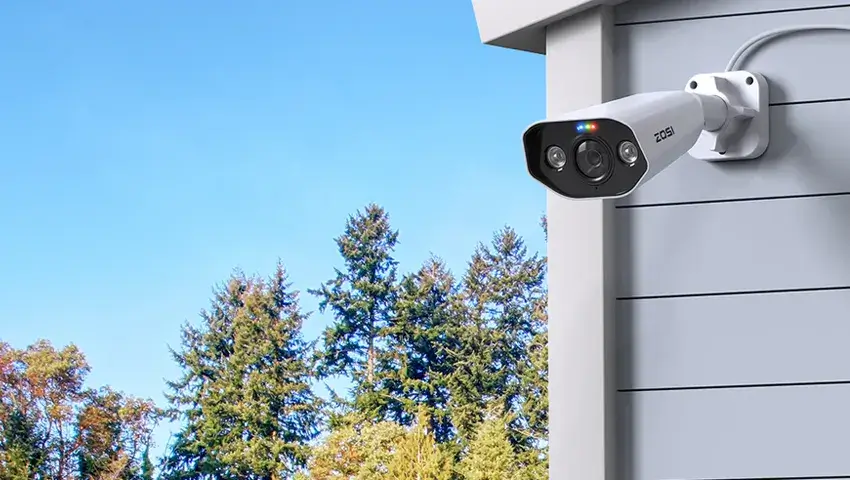Imagine a world where every important moment is captured, stored, and ready to revisit whenever needed. From securing your property to recording your favorite TV show, DVRs have revolutionized the way we interact with video.
A Digital Video Recorder (DVR) is more than just a gadget—it’s a versatile tool used in security, entertainment, education, and beyond. In this article, we’ll explore what DVRs are, how they work, their advantages and disadvantages, and their many applications in modern life.
Contents
What is a DVR?
DVR stands for Digital Video Recorder. It is a device designed to record video in a digital format for storage, playback, and management. Unlike older VCRs that relied on tapes, DVRs use hard drives or other digital storage, making them more efficient and user-friendly.
While DVRs are a cornerstone of security systems, they’re also widely used for other purposes, such as recording live television. They convert analog signals into digital formats, ensuring high-quality video that’s easy to access and manage.
Comparison:
- DVR: Works with analog inputs, commonly used in security setups.
- NVR: Designed for IP cameras, often used in advanced networked systems.
- VCR: An outdated tape-based system.
How Does a DVR Work?
DVRs operate in a straightforward yet efficient way:
- Input: Receives video signals from analog cameras, TV tuners, or other devices.
- Processing: Converts these analog signals into compressed digital formats.
- Storage: Saves the footage on a hard drive, allowing for long-term storage.
- Access: Enables users to view live or recorded video through connected monitors, apps, or web interfaces.
Advanced features like motion detection, remote access, and scheduling enhance the DVR’s usability, making it suitable for various applications.
Pros and Cons of DVR
Pros
- Reliable Storage: Stores recordings locally, ensuring no reliance on the internet for access.
- Cost-Effective: Analog systems with DVRs are typically more affordable than IP-based solutions.
- Ease of Use: User-friendly interface for playback and management of recordings.
- High-Resolution Recording: Supports clear and detailed video, especially in modern models.
- Advanced Features: Motion detection, scheduled recording, and remote access enhance usability.
Cons
- Limited Camera Compatibility: Works mainly with analog cameras, not IP cameras.
- Storage Limitations: Fixed storage capacity that may require manual deletion or external drives for extended use.
- Hardware Dependent: If the DVR fails, stored data could be lost.
- Wiring Requirements: Analog setups often require extensive cabling compared to wireless solutions.
- Less Scalable: Adding more cameras can be challenging and may require a new DVR.
Applications of DVR
DVRs are incredibly versatile, with applications spanning multiple fields:
- Security and Surveillance: DVRs are integral to security systems, providing continuous or motion-based recording for homes, businesses, and public spaces. They store video evidence crucial for investigations and legal proceedings.
- Television Recording: In home entertainment, DVRs allow users to record live TV shows, pause and rewind broadcasts, and enjoy content on demand.
- Education and Training: Schools, universities, and corporations use DVRs to record lectures, webinars, and training sessions. These recordings can be accessed later for review or remote learning.
- Sports and Events: DVRs capture and replay key moments in sports games or live events, making them essential tools for broadcasters and event organizers.
- Healthcare: In the medical field, DVRs are used to record surgeries and medical procedures for training and documentation purposes.
- Retail and Marketing: Businesses use DVRs to monitor customer behavior, study traffic patterns, and optimize store layouts and promotions.
Future of DVR Technology
The DVR is evolving with technology trends:
- Cloud Integration: Offering seamless remote storage and access.
- AI Analytics: Automating video analysis for smarter surveillance and content management.
- Higher Resolutions: Supporting 4K and beyond for ultra-clear video quality.
Recommended DVR for Your Needs
Looking for a dependable DVR system? The ZOSI 16-Channel 1080p Security Camera System stands out as an exceptional choice.

Key Features:
- Smart AI Technology: Detects and differentiates between people and vehicles, reducing false alarms from irrelevant motion.
- 16-Channel Support: Connect up to 16 cameras for comprehensive coverage of your property.
- 1080p Full HD Video: Delivers crisp and detailed footage to ensure nothing goes unnoticed.
- Remote Access: View live or recorded video anytime, anywhere, via the ZOSI Smart app.
This system combines cutting-edge AI features with user-friendly controls, making it perfect for safeguarding both residential and commercial spaces.
Conclusion
Whether you’re securing your home, capturing TV shows, or recording critical moments in sports or healthcare, DVRs play a vital role in modern life. Their advantages—like cost-effectiveness and reliability—make them a trusted choice, though their limitations may lead some users to explore NVR or cloud-based solutions.
If you’re looking for reliable DVR systems tailored for your needs, explore ZOSI’s innovative range of products designed to make your security and recording needs simpler and smarter.





